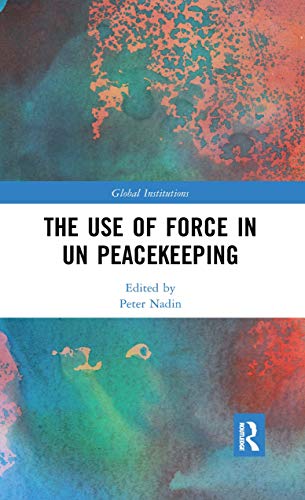

Most ebook files are in PDF format, so you can easily read them using various software such as Foxit Reader or directly on the Google Chrome browser.
Some ebook files are released by publishers in other formats such as .awz, .mobi, .epub, .fb2, etc. You may need to install specific software to read these formats on mobile/PC, such as Calibre.
Please read the tutorial at this link. https://ebooknice.com/page/post?id=faq
We offer FREE conversion to the popular formats you request; however, this may take some time. Therefore, right after payment, please email us, and we will try to provide the service as quickly as possible.
For some exceptional file formats or broken links (if any), please refrain from opening any disputes. Instead, email us first, and we will try to assist within a maximum of 6 hours.
EbookNice Team

Status:
Available4.6
31 reviews
ISBN 10: 1138686867
ISBN 13: 9781138686861
Author: Peter Nadin
PART I: Questions of doctrine
1. The case of East Timor: Ancient history or the shape of things to come?
Deployment of InterFET
From InterFET to UNTAET
Resurgence of violence
The legal debates
Brahimi and HIPPO on the use of force
Politics and the use of force
Jakarta elites
Indonesian military leadership
Former East Timor militia
Role of international institutions
Conclusion
Notes
2. Action adapted to circumstance: Peacekeeping doctrine and the use of force
The nature of military doctrine
Prodding the middle ground
Peace support operations (PSO) doctrine
UN peacekeeping doctrine
Joint Doctrine Note 5/11
Conclusion
Notes
3. Between absolute war and absolute peacekeeping: The question of the use of force in peacekeeping
Peacekeeping and the importance of the notion of the enemy
The use of force in peacekeeping: From traditional peacekeeping to robust peacekeeping and the responsibility to protect
Going beyond Clausewitz: Theoretically coping with the question of the use of force in peacekeeping
The question of the enemy
The dialectic between absolute peacekeeping and absolute war
The use of force as a function of the political objectives of the international community
The tertiary trinity
Friction and other intangibles
The theoretical framework: A synthesis
Conclusion
Disclaimer
Notes
4. Is stabilization the new normal? Implications of stabilization mandates for the use of force in UN peacekeeping operations
What does stabilization mean in the UN context and why does it matter?
Characteristics of UN stabilization missions
How does stabilization in the UN context differ from stabilization used in the US and UK doctrines?
Implications for the use of force in UN peace operations
Conclusion
Notes
5. The utility of military force to protect civilians in UN peace operations
The utility of military force to protect
Categorizing threats to civilians in UN peace operations
Genocide
Ethnic cleansing
Regime crackdown
Post-conflict revenge
Communal conflict
Predatory violence
Insurgency
UN protection operations in Africa (1999–2014)
Geographical distribution
Protection scenarios
Success or failure?
Matching perpetrator strategies
The utility of military force to protect
Conclusion
Notes
6. Protecting civilians with force: Dilemmas and lessons from the UN stabilization mission in Haiti
The United Nations takes on the gangs in Haiti
Collateral (civilian) damage and aftermath
Ethical dilemmas and challenges explored
Mandates—set not too high, not too low, but just right?
Conclusion
Notes
7. The unintended consequences of the use of force by UN peacekeepers
The evolution of the use of force in peace operations: A “robust turn”?
The unintended consequences of the use of force
Conclusion
Acknowledgments
Notes
8. The logic of force in UN peacekeeping: A policy primer
Is the use of force a requirement of UN peacekeeping?
Why is the use of force problematic?
What needs to change?
Are asymmetric environments different?
Recommendations
Conclusion
Notes
PART II: Questions of practice
9. Leadership in UN missions
Leadership at the UN
The mission leadership team (MLT)
Mission implementation
The importance of leadership preparation
Reform of peace operations processes
Peacekeeping principles and doctrine
The mission atmosphere
Leading by example
Use of force
Protection of civilians (POC)
Robust peacekeeping
Command and control
Conclusion
Notes
10. The use of force and the civil–military dimension
Peacekeeping and conflict resolution
The UN, civil–military cooperation, and robust peacekeeping: A delicate balance?
Civil–military cooperation with the local population
The use of force in peacekeeping: Multiple approaches
Challenges of robust peacekeeping
Changing the practice of peacekeeping: Training peacekeepers and realigning structures?
Conclusion
Notes
11. Generating the ability: The challenges of force generation
Reimbursement
The force generation processes and marketplace
Performance standards
Weapons proficiency
Operational skills
Preparation and approach
Epilogue
Conclusion
Notes
12. UN peacekeeping and international law
Peacekeeping and the UN Charter
The fundamental principles of peacekeeping
Use of force
The Responsibility to Protect doctrine and peacekeeping
what is un peacekeeping force
the use of force in un peace operations
what is the un peacekeeping force
peacekeeping forces definition
use of force in peace operations
Tags: Peter Nadin, Use, UN Peacekeeping